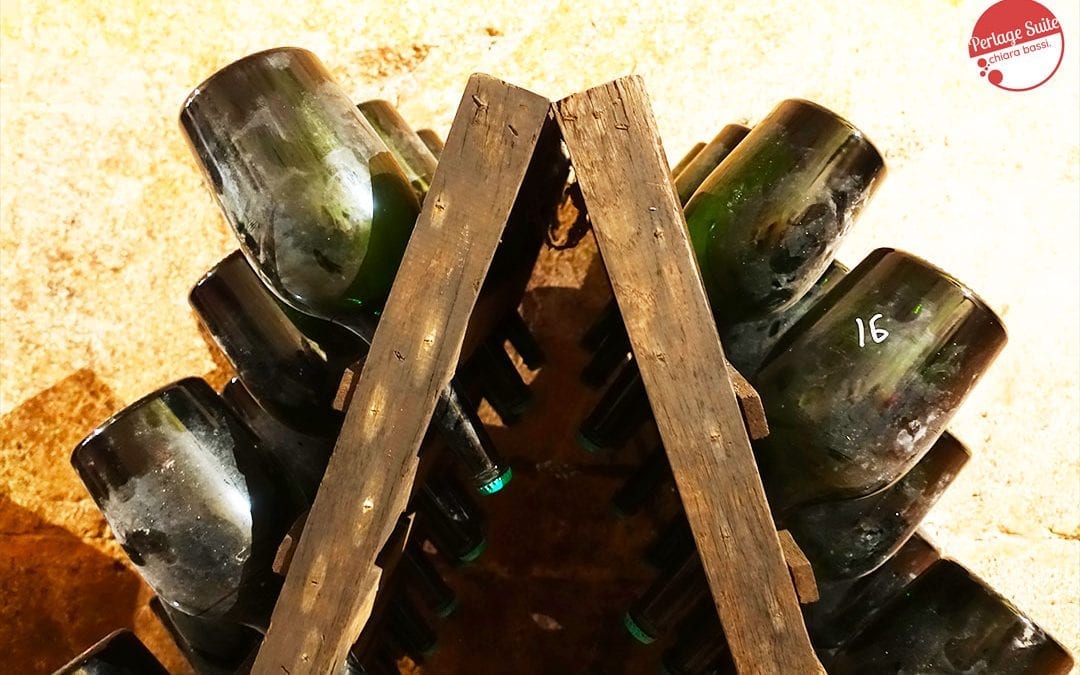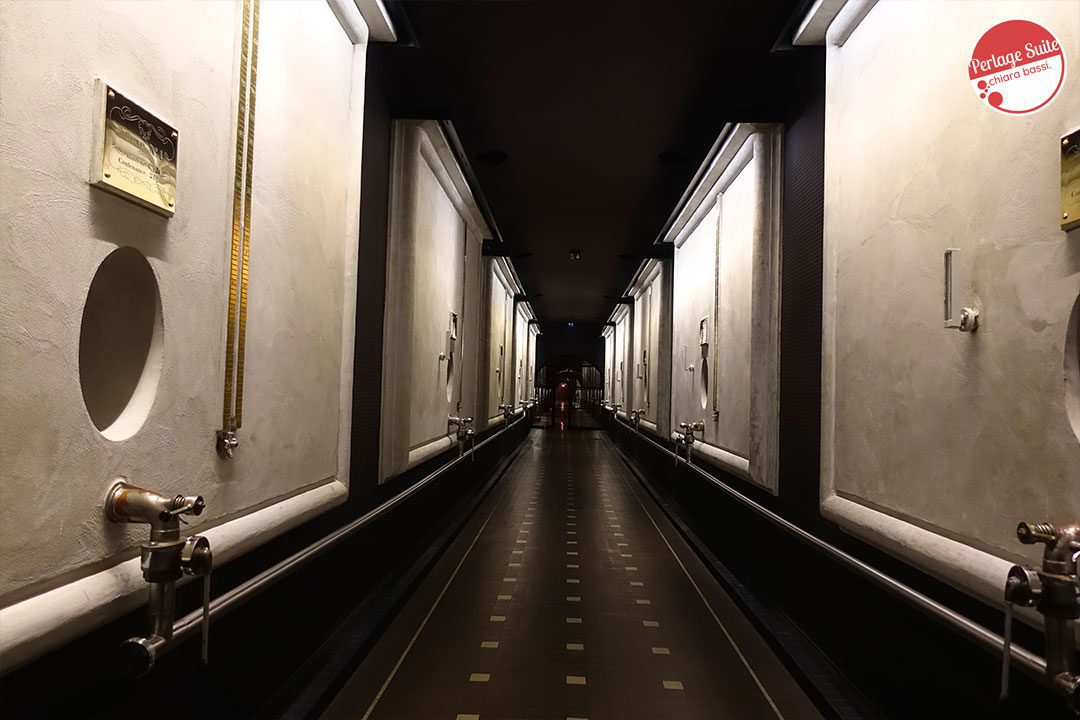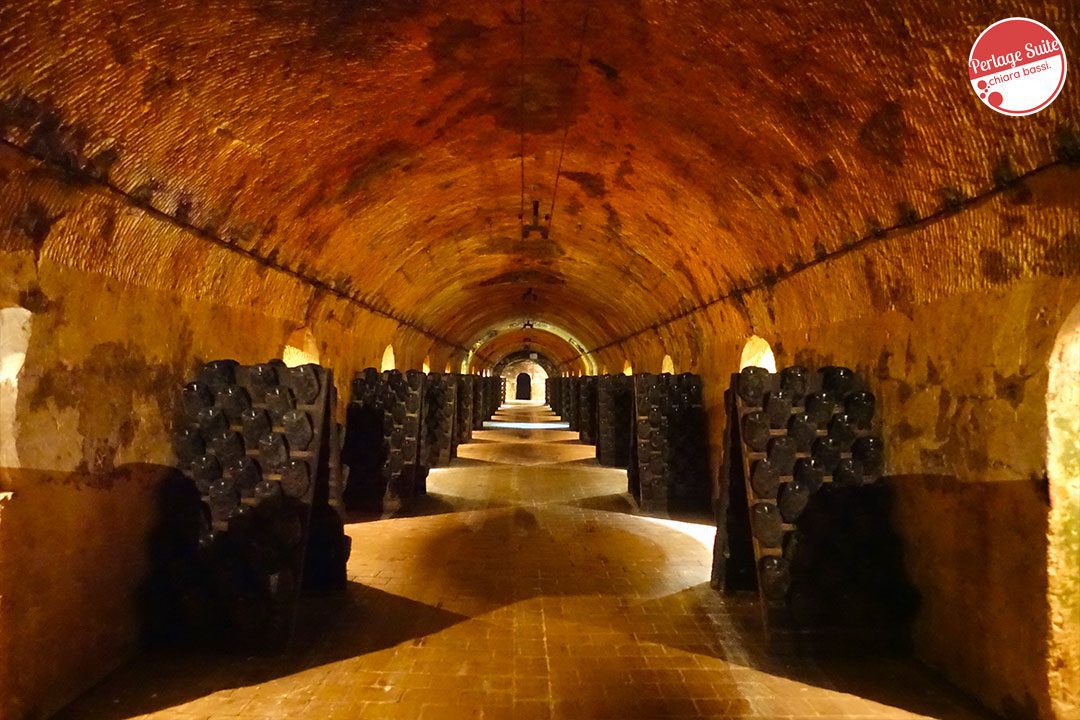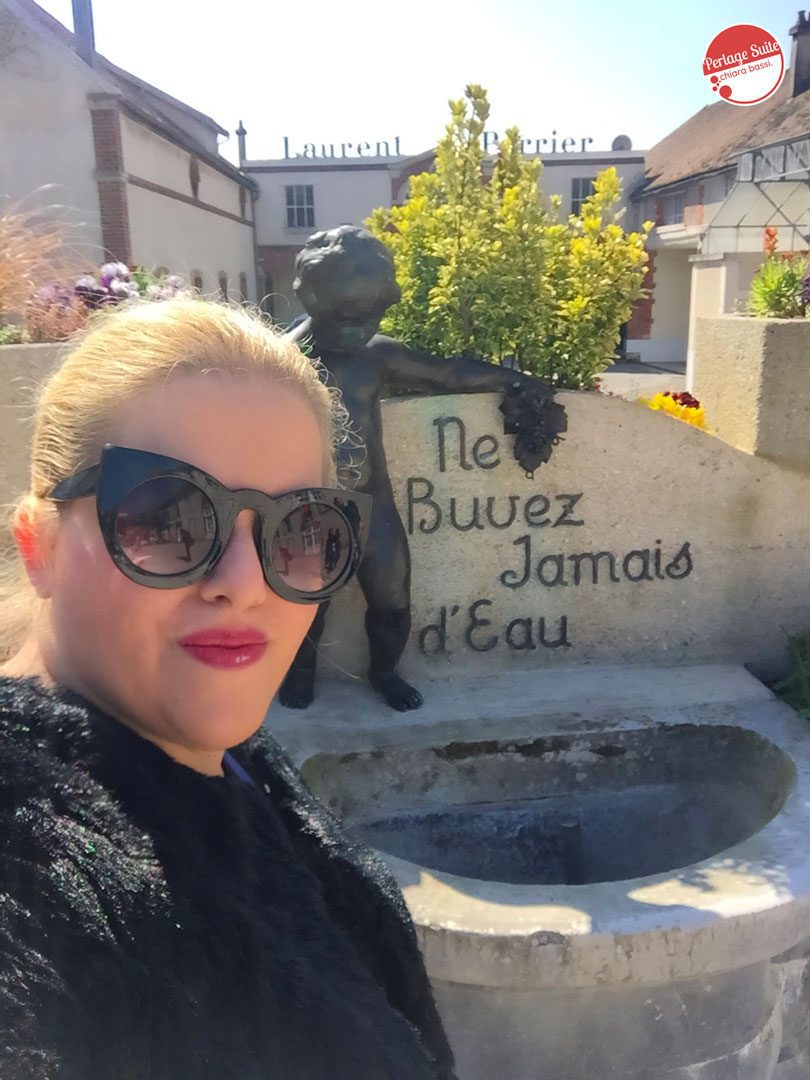Although I would like to introduce you immediately to a beautiful and important new feature of Perlage Suite, tomorrow I have my History of Enogastronomy exam (do you remember that since I am no longer around as I used to be due to the Coronavirus, I enrolled in the University of Gastronomy, specialising in Oenology and Viticulture?) and my time to write is limited... so I am taking the opportunity to post an educational article dedicated to the elaboration of the classic method sparkling wine taken from my handbook "How to become a Sommelier: everything you need to know about wine in one book". My aim is twofold: on the one hand to explain to the enthusiast how this prestigious sparkling wineon the other hand help theaspiring sommelier in its preparation to overcome the new AIS examination.
Classic method sparkling wine: birth of a legend
Legend has it that quality sparkling wines originated in France around 1670 by the steward of the Benedictine abbey of Hautvillers, Dom Piérre Perignon. Actually, in the courts of Renaissance and Mannerist Italy, mordacious wines were already an adored and abused luxury good for some time, so that some claim Italian paternity of this type of wine. In reality, the classic method sparkling wine, as we know it today, is the end product of the serendipity of a series of oenological discoveries that took place all over Europe between 1500 and 1800.
Metodo classico spumante: the 'recipe' explained in 10 steps
The Metodo Classico is obtained from bottle-fermentation of base winesplus a succession of meticulous oenological practices.
Step 1: Preparing the base wine
The grape varieties traditionally (and ideally) used to obtain the base wines are chardonnay, pinot noir, pinot blanc and pinot meunier, although some indigenous varieties are now also used - sometimes with interesting results. The bunches of grapes must not be subjected to trauma during the harvest and transport to the cellar, which is why quality production favours manual harvesting in small crates of a maximum of 20 kg. After selecting the bunches, a soft, fast and progressive pressing is carried out. The must is immediately cooled, collected in stainless steel vats and decanted by gravity to eliminate the coarsest particles. It is then stabilised with a modest dose of sulphur dioxide (I recommend reading: why does wine contain sulphites?) so that it does not oxidise and the yeast load does not become too great. The must undergoes a second racking in a vat in which the pied de cuve is prepared, i.e. the selection of yeasts that triggers the first alcoholic fermentation and transforms it into the base wine. The first fermentation lasts about a month and takes place at a controlled temperature of about 18 °C.
The base wines obtained are stored at -3°C to block oxidative processes. This is followed by blending, which tends to take place in the spring following the harvest. Blending can be with base wines from the same vintage, thus giving rise to a Spumante Millesimato (at least 85% of the grapes must come from the same vintage), or with base wines from different vintages, thus giving rise to a Cuvée.
Step 2: Adding the dosing syrup
Dosage syrup, also called liqueur de tirage, is a mixture of wine, cane sugar, yeast and mineral substances (especially ammonium to promote yeast development) with 24 g/l sugar. It is used to start the second fermentation in the bottle.
Step 3: Bottling
Immediately after the addition of the dosing syrup, bottling takes place. Traditionally, these sparkling wines are placed in champagnotes, very thick glass bottles of a dark green colour that protects the wine from the terrible oxidative action of light. The bottles are sealed with the traditional stainless steel crown cork that prevents rust from forming in the humid cellar environment.
Step 4: Foaming
The bottles are stacked horizontally in places with a low and constant temperature (10-12°C) in the absence of noise, vibration, light, heat and a good level of humidity. The yeasts transform sugar into carbon dioxide and ethyl alcohol and form a series of secondary substances that enrich the sparkling wine with characteristic aromas and flavours. The curiosity is that the yeasts transform all the available sugar within 6 months, and deplete the wine by robbing it of mineral salts, proteins and amino acids. After 6 months, autolysis begins, a biological process during which the yeasts destroy themselves and return to the wine, with interest, all the substances they had taken from it.
Step 5: Maturation on the lees
The more time the wine spends in contact with the yeasts, the more it is enriched with aromas and the bubbles become fine and persistent. Maturation can last from a minimum of 10 months to a maximum of 150 months, depending on the type of product desired.
Step 6: Remuage
During the final period of maturation on the lees, the bottles are placed on pupitres, i.e. special racks where, with manual rotations that bring the bottles into a vertical position, the separation of the lees that now occupy the neck of the bottle near the cork takes place. Remuage can also take place mechanically in large baskets. To perfect the evolution, the bottles can be stored in the tip for a few months to a few years.
Step 7: Disgorgement/degorgement
It is the freezing of the neck of the bottle where the yeast is located through a solution of salts at - 30°C. The bottles travel on a conveyor belt first with the cork pointing downwards while the popsicle forms, then with the cork pointing upwards where the popsicle is ejected due to the pressure inside the bottle following uncorking and removal of the crown cap.
Step 8: Dosing (Optional)
At the end of fermentation in the bottle, the sparkling wine has very little sugar because the yeasts have processed it all (about 0.5 g/litre). At this point, the producer can choose to add liqueur d'expédition, a secret recipe based on aged and/or barrique wine, cane sugar and, schnapps, to the wine.
Step 9: Refilling
After dosing, the bottles are topped up with the same wine so that the level is the same in each bottle and the amount of air trapped under the cork is also identical.
Step 10: Capping
The bottle of sparkling wine is corked with the characteristic mushroom-shaped cork (hopefully) imprisoned in a metal cage. which prevents it from being uncorked due to pressure.
Classic Method sparkling wine: how to choose it?
When choosing a sparkling wine, be it Metodo Classico or Metodo Charmat, one of the fundamental factors is the residual sugar content. This is not only for the purpose of the pairing you want to make, but above all to suit your taste.
Depending on the method of sparkling you will find more wines of one type than another. This stems both from a qualitative discourse (the lower the dosage, the higher the quality of the product) and from 'a consumption habit' and a product purpose that 'disproves' the first option. In Italy, more generally speaking, there are interesting wines of all types, and I invite you to choose freely without preconceptions precisely on the basis of what you want to drink and the pairing you eventually need to make!
Types of sparkling wine according to residual sugar:
- Pas Dosé, Dosage Zero or Brut Nature = Sugar less than 3 g/l;
- Extra Brut = Sugar less than 6 g/l;
- Brut = Sugar between 6 g/l and 12 g/l;
- Extra Dry = Sugar between 12 g/l and 17 g/l;
- Sec or Dry = Sugar between 17 g/l and 32 g/l;
- Demi-sec or Abboccato = Sugar between 32 g/l and 50 g/l;
- Sweet or Doux = Sugar greater than 50 g/l.
Classic Method sparkling wine: how to store it?
I recommend storing them in the dark and away from heat sources, possibly in an environment that never exceeds 18°C even in summer! If you can, keep the bottles horizontal! If the bottle is lying down, the wine wets the cork, which remains moist and consequently well adhered to the glass (because it swells when wet). This prevents air from entering and oxidising the wine, while keeping the bubbles intact!
Classic Method sparkling wine: when to drink it?
Classical Method sparkling wines should be drunk within 18-24 months after disgorgement, although there are of course exceptions. In the case of a properly crafted Metodo Classico sparkling wine that has not aged too many months on the lees (indicatively a maximum of 36/48 months), an old disgorgement, even 10 years old, can be extraordinary.
As always, I hope you enjoyed this article and found it useful.
You can now continue your training in the world of wine by returning to the Didactics or discover some sparkling wines you like in the wine blog section dedicated to champagne & sparkling wines.
Cheers 🤗🥂
Chiara
P.S. As always, I remind you that you can scroll down the page and leave me a comment to ask what you want or tell me what you think!





